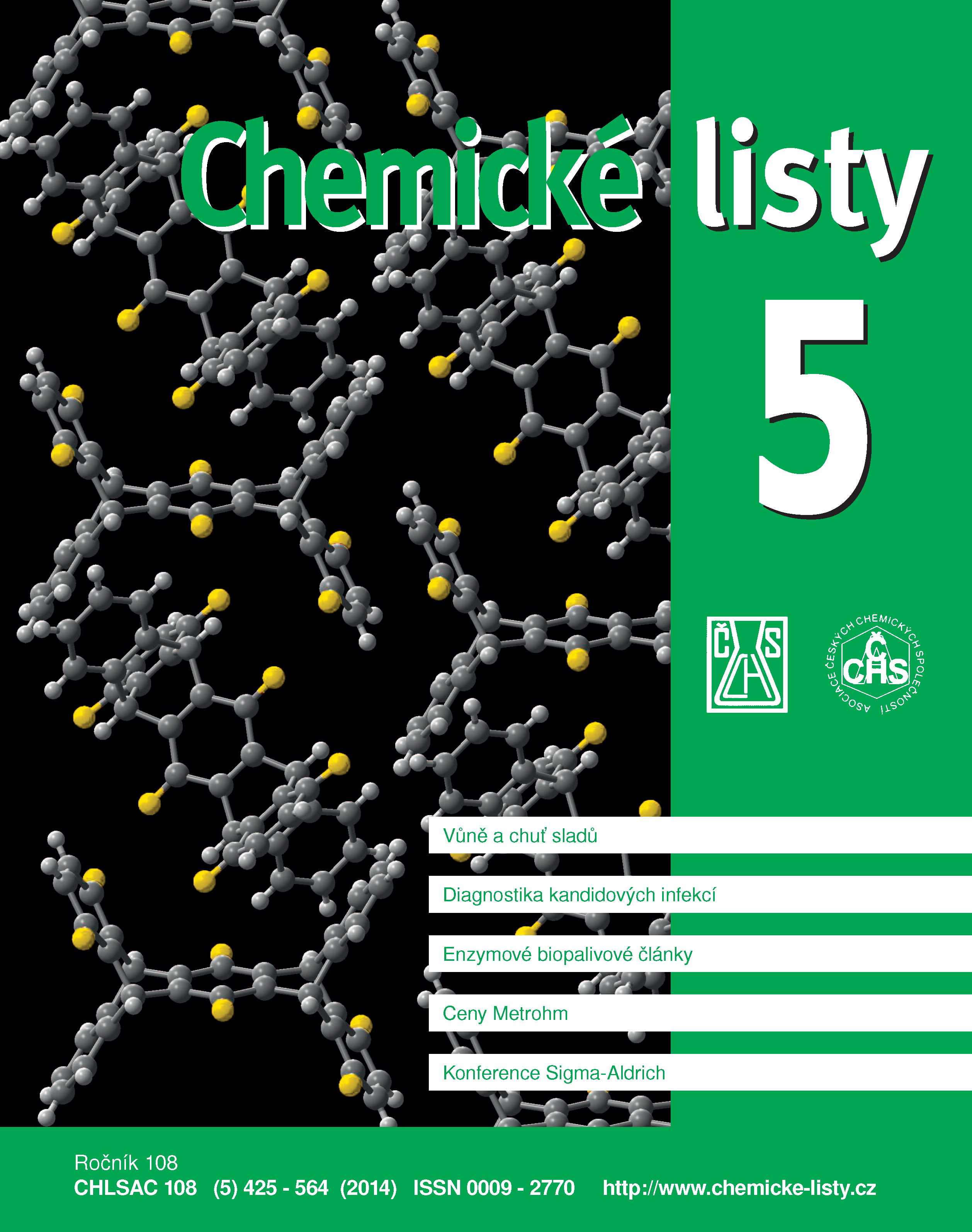Současné trendy v elektrochemii nukleových kyselin
Klíčová slova:
elektrochemie, elektrody, hybridizace nukleových kyselin, DNA senzory, mikroRNA, poškození DNAAbstrakt
Electrochemistry could be a valuable tool in nucleic acids research by offering relatively inexpensive instrumentation, short assay times and high sensitivity. Interesting applications can be found in the literature, including detection of oncogenes or tumor suppressor genes, analysis of point mutations in DNA, or determination of viruses and bacteria. Moreover, new strategies are being developed for detection of microRNAs, or for analysis of DNA methylation, both important in carcinogenesis. These novel approaches usually involve the use of various electroactive labels, nanomaterials, enzymes or magnetic particles, rendering them more sensitive, selective and efficient. In addition, electrochemistry was applied also in studies of DNA damage and interactions with other molecules. Numerous chemicals damage DNA in such a way that they alters electrochemical properties of DNA itself, such as oxygen radicals, aromatic hydrocarbons, alkylating agents and pesticides. DNA-modified electrodes could thus serve as simple biosensors for detection of environmental pollutants as well as potential antitumor drugs.





